List of Authors
>>About this blog
Recent blog post
|
[O'age]
February 28, 2017 18:00
In the park, I took the following photo on a chilly day when the snow of the Snow Festival remains.
Siebold (1796-1866)
Philip Franz von Siebold arrived in Nagasaki in July 1823 as a Dutch trading house doctor, and was active in opening a private school in Narutaki, Nagasaki, alongside medical treatment.
On the New Year of the same year, he headed to Edo with the director of the trading house, stopped at Nagasakiya in Nihonbashi on March 4, and before leaving on April 12, interviewed Dutch scholars in Edo and had a great influence. However, after the Siebold incident occurred in 11 years, he was expelled from Japan in December. He later returned to Japan as an advisor to the Shogunate in 1859 (1859), but soon returned home and died in Munich.
His guidance in Edo was greatly contributed to the development of Edo Dutch studies. This land is the birthplace of Edo Dutch studies, and his daughter Ine, who received in Nagasaki, opened a maternity hospital in Tsukiji, and foreign settlements were established in this area from the early to mid-Meiji era. Therefore, he builds his bust here to reward his understanding of Japan and his achievements as a bridge between Japan and the Netherlands.
Chuo-ku Board of Education
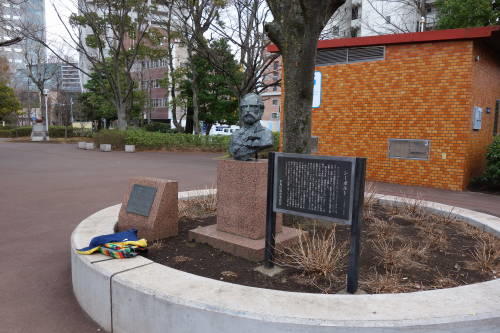
One of the reasons for the bust here is the fact that Siebold's daughter, Ine, who received a daughter in Nagasaki, opened a maternity hospital in Tsukiji.
I looked for a specific address, but I didn't know. I'll read a little novel. It can be seen that "Ine" was a person who lived as a doctor in the turbulent era of the Meiji era from the end of the Tokugawa period to the Meiji era. In addition, there are many famous historical figures, the depiction differs depending on the writer, and there are interesting things.
"Ine" was born in Nagasaki in 1827. He studied obstetrics and Dutch studies, and opened a maternity hospital in Tsukiji in 1870 (closed in 1875). In 1889 (1889) Ine moved to Tokyo from Nagasaki again and lived in Azabu with her daughter Takako. He died in 1903 (1903), 76.
[Nojinya]
February 28, 2017 14:00
Chuo-ku, which has been developed as a cultural and economic center since the Edo period, has various historical sites, including nationally designated important cultural properties. Chuo-ku has been developed mainly as a commercial area, but this time I would like to visit historical sites related to industry. Since the Meiji Industrial Revolution Heritage of Japan was registered in World Heritage in 2015, it has become widely known that industrial facilities are also registered in World Heritage, but in foreign countries (Austria, India, Spain, etc.), active railways and bridges have been registered in World Heritage. In Chuo-ku, there are Eitai Bridge, which is recognized as a civil engineering heritage, and Kachidokibashi, which boasts the uniqueness as the best movable bridge in the East, but this bridge, Harumi Iron Bridge.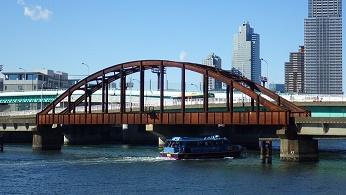
From Triton Square in Harumi, take Harumi-dori St. toward the Toyosu district and cross the Harumi Bridge over the Harumi Canal. The Harumi Railway Bridge is hanging to the south side of the Harumi Bridge. In contrast to the new Harumi Bridge and the high-rise condominiums of Toyosu, rusted arches and concrete bridges show impact, but this is made in 1957 as the Harumi Line of the Port and Harumi Line of the Tokyo Metropolitan Government in 1957, and is linked to the Japanese National Railways via the harbor railway network.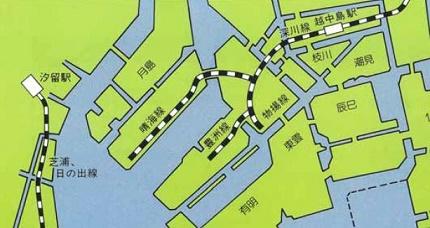
[Tokyo Freight Railway Line Network Map] Provided by Tokyo Port and Harbor Promotion Association, Tokyo Minatokan
The Toyosu area, which had already been redeveloped earlier, was originally a shipyard of Ishikawajima Harima Heavy Industries (IHI), but in the Harumi 2-chome area on the opposite bank, the original dedicated lines, sheds and cement factories were gradually removed, and now it is being reborn as a high-rise apartment, Harumi Rinkai Park, etc.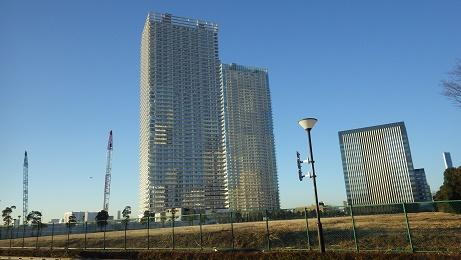
In the first year of 1989 (1989), the Harbor Bureau Harumi Line closed a history of only 32 years due to the conversion of freight transportation to trucks, but the Harumi Railway Bridge still remains due to the cost of removal. I am.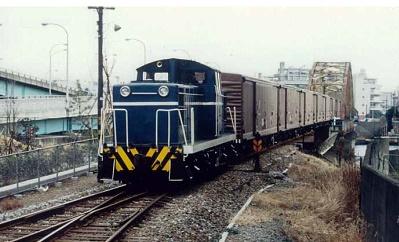
[Tokyo Freight Railway Harumi Railway Bridge] Provided by Tokyo Port and Harbor Promotion Association, Tokyo Minatokan
Of course, this bridge is not used at present because the freight line has been abolished, but from a global perspective, there are many cases where such a historic bridge has been reborn as a tourist attraction, along with the adjacent Harumi Park, It is a historic site that symbolizes the capital city of Chuo-ku and wants to keep it as a heritage that tells the history of Harumi Wharf. At the site of the Ishikawajima Shipyard in Toyosu on the opposite bank, the original shipbuilding crane is lit up in LaLaport, a commercial facility built on the site, making it a tourist attraction (the situation can be seen from Chuo-ku). ). Many cultural properties currently registered in World Heritage have revived their potential value through local efforts, such as the ruins of St Paul Temple in Macao and the Sitho monastery in France.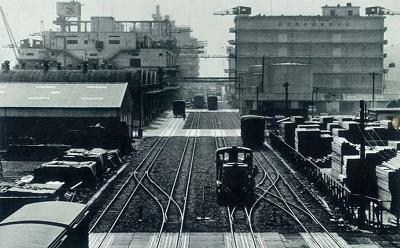
[Tokyo Freight Railway Harumi Wharf Station] Provided by Tokyo Port and Harbor Promotion Association, Tokyo Minatokan
The photo below shows Harumi Ohashi, which was taken from the boat at the museum. It was a thrilling cruise that passed through the bottom of the girder.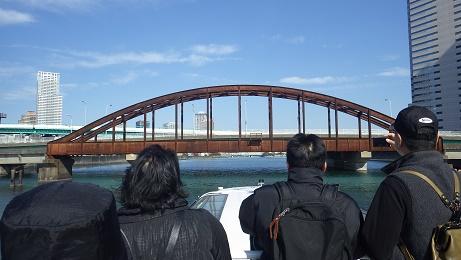
[Harumi Railway Bridge]
〒104-0053 Harumi Bridge Nishizume 2-chome Harumi Bridge, Chuo-ku (Northest station: a 15-minute walk from Tsukishima Station on the Yurakucho Line and Oedo Line).
1.
February 28, 2017 09:00
In February, we will guide you to Edo-like friends in the daytime of Kabukiza. It's the first group appreciation, but I'm looking for "4,000 Ryo" "Temmacho Nishi Daigogi". It is a place that has been very popular since the premiere due to its realism.
In 1855 (1855), the former smallest person Fujioka Fujioka Fujijuro and Tomizo of Noshu Mujuku stole 4,000 cars from Gokinzo in Edo Castle, and it was impossible to perform in the Edo period in Ryuishi. The main character was also real name, Tomizo Fuji, the fifth generation Kikugoro Ichikawa, 5th generation Fujizo, 7.
The place of this "Temmacho Nishi Daigoku" which attracted a lot of attention. The source of information for Miku Ami is Nariyoshi Tamura, who had a friendship with Kikugoro the fifth generation. Nariyoshi Tamura was adopted by Kintaro Tamura, who played the role of prison concentric and key, and he himself has worked in prisons, and the realities of prisoners and customs are thanks to this. Nariyoshi Tamura later served as a counselor for Kabukiza and effectively ruled Kabukiza until the management right moved to Shochiku at the beginning of the Taisho era, and was called "Tamura Shogun". ("Kabukiza Godai," Toshihiko Ishiyama)
This time, Kikugoro and Umetama of the current generation will be performed, and the prisoner will be Sadanji.
"Chikuma Miso", which appears on the line called "Misohachikuma Limited Rurunou" at the first place of the beginning, is still at the base of Eitai Bridge, and as you know, "Behaved amazake" when Akaho Nanji was withdrawn.
After the theater, I moved to a nearby cafe and said, "How to use the board that hits the prisoner, the long line that tells the prison method is amazing," and when it comes to the story of "Temmacho prison site", everyone loves Edo with drifting stones, I have gone. At the entrance of Jushi Square in Nihonbashikodenmacho, there is also a model of an elaborate prison, and if you look at the play or see it after seeing it, you will leave it to you. It's a popular kyogen, so if you miss it this time, please look forward to the next time.
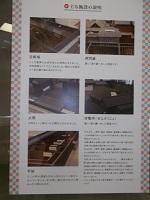 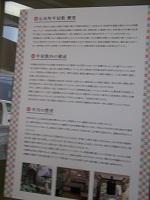
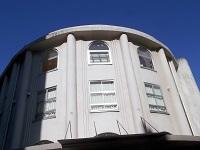 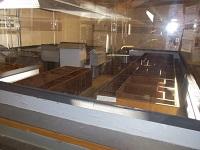
"Kodemmacho Gunyashiki Exhibition Hall"
5-1 Jushi Square, Nihonbashi Kodenmacho
From Monday to Friday from 9:00 to 18:00
[Shiba Inu]
February 27, 2017 09:00
Recently, there has been a series of fashionable hostels that can be easily used in the "super city center" area around Tokyo Station. The feature of these hostels is that they are made with a focus on mobility for those who want to experience the city from morning to night, or from night to morning. What I want is not a luxury, but a cozyness and freshness of information! It's very popular with tourists.
The pioneer of this trend was in the wholesale district, Bakurocho! "IRORI" opened at the end of 2015.
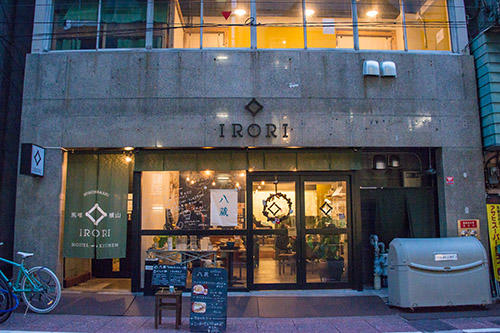
It is a large guest house built by renovating a 40-year-old building and can accommodate about 70 people. It starts at 2800 yen per night! The management body is R.Project Co., Ltd., which has launched a number of projects to rediscover the charms of various parts of Japan. Mr. Dai Tamesue, a medalist, is also a member of the board.
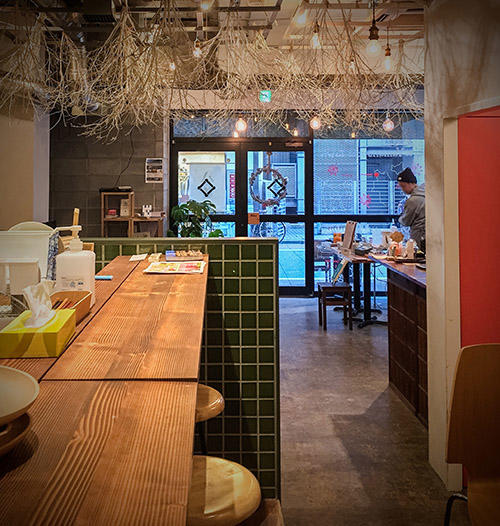
There is a reception and a cafe on the first floor. There is a real Irori in the entrance space! They are going to bake fish here in the morning and evening. Furniture and interiors have local products from various places, and have plenty of seasonal feeling.
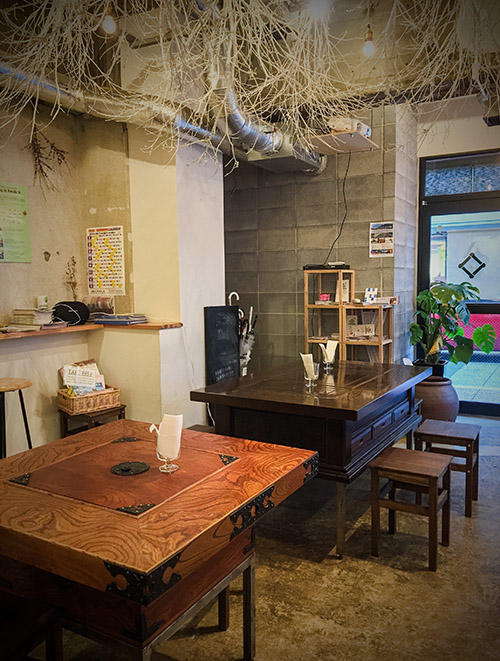
This cafe and lounge is also available to ordinary guests who are not staying. Every day, popular shops from all over the country go on business trips to provide delicious food and drink. The price is also affordable! The coffee is carefully brewed over time every cup, and it is very delicious.
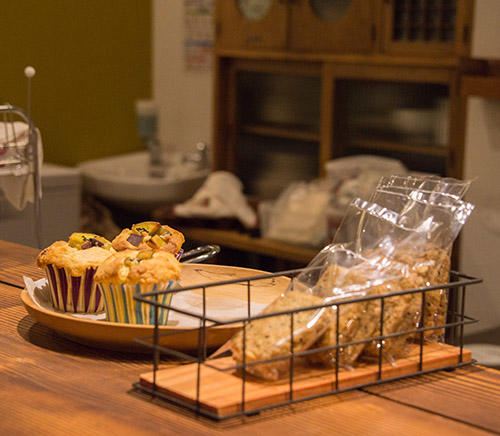
And the very recommended reason for general use of IRORI's cafe is that there are a lot of free papers and tourist maps!
There are many information magazines, although useful contents are covered not only for tourists but also for neighbors. You can enjoy it just by reading them while drinking coffee at the end of Irori. There are people who send this much maniac information and live information of Chuo-ku....I'm also surprised at that.
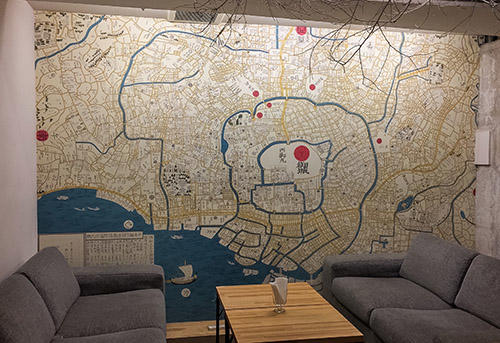 Both tourists and locals. Both tourists and locals.
It is also a place where you can feel the local culture other than Tokyo.
Please go to "IRORI", where many "people who want to taste Tokyo" come and go regardless of age, gender, regardless of nationality, come and go. Please visit this website for information on the day's cafe menu and accommodation information!
[rosemary sea]
February 18, 2017 09:00
This is the rosemary sea, which covers "gifts and enjoy yourself" as a command.
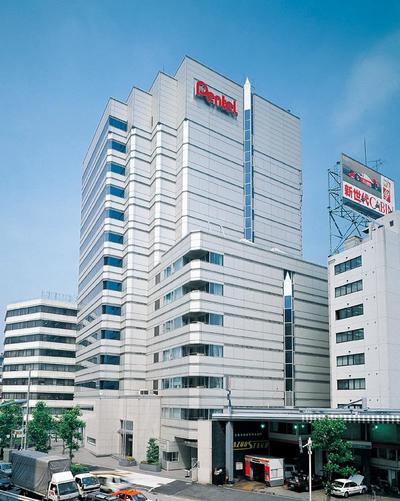
This time, Mr. Uchimura, Marketing Promotion Department, Pentel Co., Ltd., approved the publication of the article and provided images.
Pentel Co., Ltd., a major stationery manufacturer.
Its roots were that wholesalers of brushes, ink, and inkstones were run in Asakusa.
In 1946, he moved to the current location of Nihonbashikoamicho and established Dai Nippon stationery Co., Ltd.
In 1971, the company name was changed to Pentel Co., Ltd.
What is the origin of the company name Pentel?
A coined word that combines painting (drawing with paint, etc.) and pastel (solid drawing material).
It is also said to include the meaning of pen (pen), a general term for writing instruments, and the meaning of Teru (telling) in "communication / expression".
It is such a naming that expresses the establishment of a painting material manufacturer well and symbolizes the product and business content.
Next, Mr. Pentel's growth was the catalyst for his growth.
※ The story from here was heard by a lecturer during the “Fat Transport Guide Training” (training for boat guides) that I attended last November.
In 1963, Pentel autograph pen was released.
As you all know, it's still a popular product.
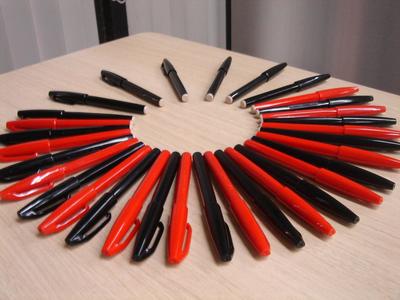
(Even at Rosmari's office, the red and black autograph pens are always from Pentel.)
However, after eight years of research, this portable aqueous mechanical pen was not sold at all in Japan at first.
However, the following year, this will lead to unexpected and surprising episodes.
 One of the autograph pens distributed at trade fairs in the United States was then US President: To Lindon Johnson's hand. One of the autograph pens distributed at trade fairs in the United States was then US President: To Lindon Johnson's hand.
President Johnson, I was impressed by the writing and decided to use this autograph pen.
The president ordered 24 dozens (288) at a time.
When this is conveyed in a magazine, orders are flooded ...
Pentel's autom Pentel became popular in the United States.
It will be very popular in Japan after this.


This is also a story in the United States as a pen.
Ink drops down to the tip of the pen due to gravity.
Therefore, ballpoint pens cannot be used in space.
NASA (Aeronautics and Space Administration) was in trouble.
There is a limelight on the autograph pen.
The pen has a structure that absorbs ink without relying on gravity.
Focusing on this, NASA has designated a mechanical pen as an official space pen that can be used even in gravity-free spaces. The pen will board the manned space flight "Jemini" from 1965 to 1966 as a writing instrument used by astronauts.
Presently, the autograph pen is recognized worldwide and sold all over the world.
It has been a long-selling hit product for more than 50 years since the launch of the Pentel autograph pen.
Pentel Co., Ltd.
7-2, Nihonbashikoamicho
Click here for the homepage of Pentel Co., Ltd. ⇒ http://www.pentel.co.jp/
[rosemary sea]
February 17, 2017 09:00
The rosemary sea is a close-up of "gifts and I enjoy myself".
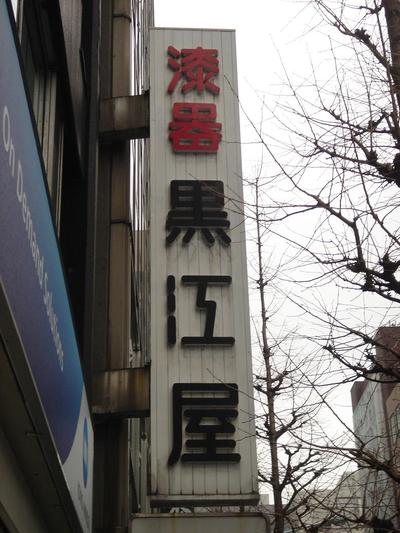
Kuroeya, a long-established lacquerware company, was founded in Genroku 2 (1689), as I explained last time.
This time, I would like to talk about Mr. Kuroeya's history.
Mr. Tanaka, Managing Director of Kuroeya Co., Ltd., for permission to publish it.
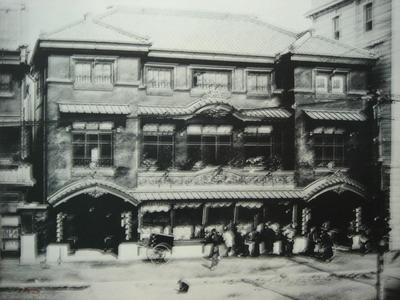
The photo above shows Kuroeya's shop before the Great Kanto Earthquake.
Kuroeya's "Kuroe" is derived from Kuroe-mura, Nagusa-gun, Kii (currently Kainan City, Wakayama Prefecture). Hainan City is a warm hilly area belonging to the Setouchi climate adjacent to Wakayama City, Arida City, Kinokawa City, etc.
In the first year of Shoo during the Kamakura period (1288), Buddhist monk and others who were chased from Mt. Koya-san moved to Naga-gun, Kii Province, upstream of the Kino River and built Negoro-ji Temple.
And time passed during the Warring States period, Negoro-ji rebelled against Nobunaga Oda. Nobunaga was angry and ordered Hideyoshi to burn it down Negoro-ji Temple.
Negoro, which was famous as a production area of lacquerware, and the Buddhist monk who made Negoro paint there flowed to various places, and one group went to Kuroe Village downstream. It is said that this led to the spread of lacquerware making in Kuroe Village.
There is a person who came from Kuroe Village to Osaka first and from there to Edo.
My first and last name is unknown, but I opened a lacquerware shop in Nihonbashi Honmachi.
This is the roots of Kuroeya.
Mr. Kuroeya, the management right will be transferred in 1774.
M&A I'm talking about now. The new manager is Mr. Kashiwaya, the Kashiwabara family, which has continued to date.
He did a wide range of business, mainly in kimono booth wholesalers.
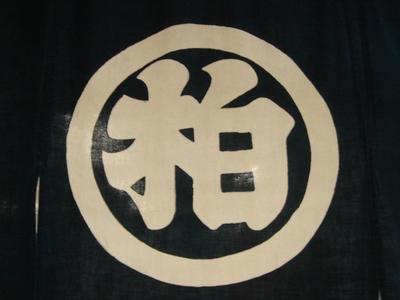
In 1856, the store was moved from Honmachi to its current location, and it continues to this day.
It is also derived from the Kashiwabara family that Kuroeya's trademark is "Kashiwa".
At that time, he served various daimyo, Ooku, etc., and since the Meiji era, he has also served the Imperial Household Ministry. It is also listed in the 1890 edition of the famous merchant family collection "Tokyo Shopping Guide".
Previously, the first floor was a high-quality lacquerware from all over the country, and the second and third floors were a sales floor for wedding furniture and furniture.
The ancestor of the Kashiwabara family was retainer, the Duke of Kato Kiyomasa, and opened a kimono and booth wholesale store in Kyoto during the Kanei era (1624-1643).
In addition, as an Edo store, we decided to have a wholesaler in Honmachi, such as booth items and cotton belonging to Edo Jugumi wholesalers.
There is a mansion about 300 years ago in Gojo, Kyoto, which now originated as a Kyosho person with an Edo store. In addition, the contents of the storehouse are displayed twice a year under the name of Rakuto Shihokan. At the Museum of Kyoto in Sanjo Takakura, Kyoto, a 1/20 model of Machiya from the Edo period is displayed.
This is about "Street Sanken" in Nihonbashi.
From the time of Edo Genroku, there were three lacquerware shops lined up along the streets of Nihonbashi in the Meiji, Taisho era, and Showa eras.
All are large shops (Odana), "Kiya", "Kinto", and "Kuroeya". It was commonly called "Sorisanken" by fellow traders and was popular until before the war.
"Kiya" is a lacquerware shop of a branch of Kiya, just like that "Kiya no Kiya".
Unfortunately, it went out of business after the war.
"Kinto" was named "Kondo" in a combination of the name of Oomiya and Fujiemon, but was later changed to "Kinto" because it was mistaken for "Kinto".
This lacquerware shop has also been transferred and closed immediately after the war.
Kuroeya continues to adhere to the precision of lacquer crafts and tradition at the base of Nihonbashi.
The current president of Kuroeya Kashiwabara Co., Ltd. is the 12th generation company.
The lacquerware sales business, the paper sales business dealing with board paper (Itagami), and the real estate leasing business are the three pillars of the current Kashiwabara family business.
1-2-6 Nihonbashi Kuroeya Kokubu Building 2F
03-3272-0948
Business hours 9:00 to 18:00
Closed on Saturdays, Sundays and public holidays
1 minute walk from Exit B9 of Tokyo Metro Nihombashi Station
3-minute walk from Exit B5 of Mitsukoshimae Station
From the bridge in Nihonbashi, it is on the second floor next to Eitaro Sohonho.
Click here for Kuroeya's website ⇒ http://www.kuroeya.com/
|
Links
|










 Both tourists and locals.
Both tourists and locals.








